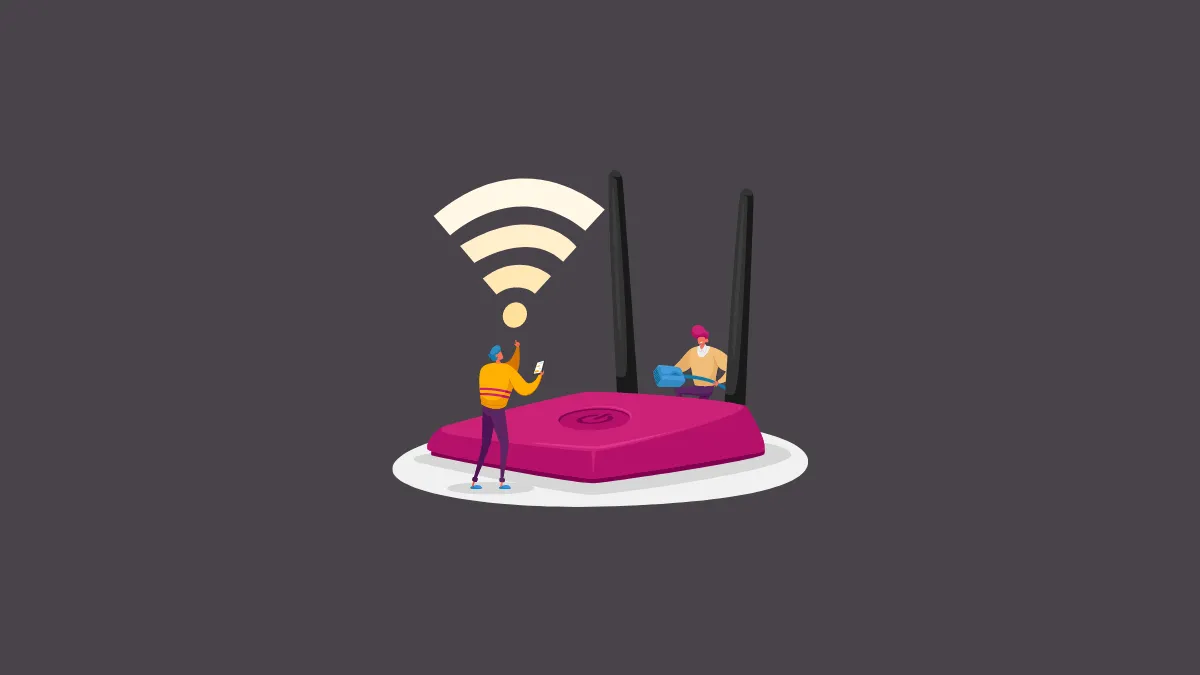Modifying your NAT (Network Address Translation) type can greatly enhance your online gaming and communication experiences by improving connectivity with other players and services. For Windows 11 users, this involves configuring both your computer and your router settings. This guide provides detailed steps to help you change your NAT type effectively.
Types of NAT
There are three primary NAT types that determine your network's connectivity characteristics:
- Open NAT: Allows your device to connect freely with others, ideal for online gaming, but may reduce network security.
- Moderate NAT: Balances security and connectivity, suitable for most users with reasonable access and protection.
- Strict NAT: Provides the highest security but can limit your ability to connect with other devices, potentially causing issues with online games and peer-to-peer connections.
Initial Setup on Windows 11
Before adjusting your router settings, it's recommended to configure your Windows 11 PC to have a static IP address and enable network discovery. These steps prepare your network for NAT type changes.
Assigning a Static IP Address
Setting a static IP address for your computer ensures that it retains the same IP address on your network, which simplifies NAT and port forwarding configurations. This is optional but highly recommended.
Step 1: Open the Settings app by pressing Win + I. Navigate to Network & Internet, then select Advanced network settings.
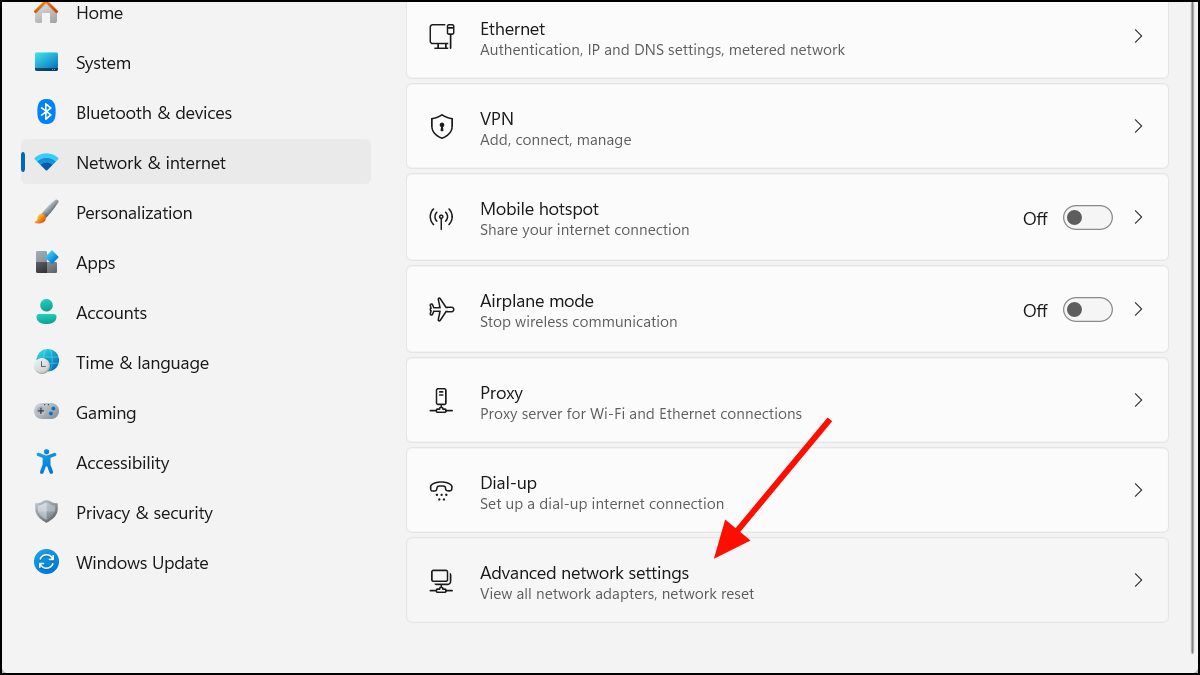
Step 2: Under Advanced network settings, find your connection type—either Ethernet or Wi-Fi. Click on it to expand and reveal related settings.
Step 3: Click on View additional properties, then click the Edit button under IP assignment.
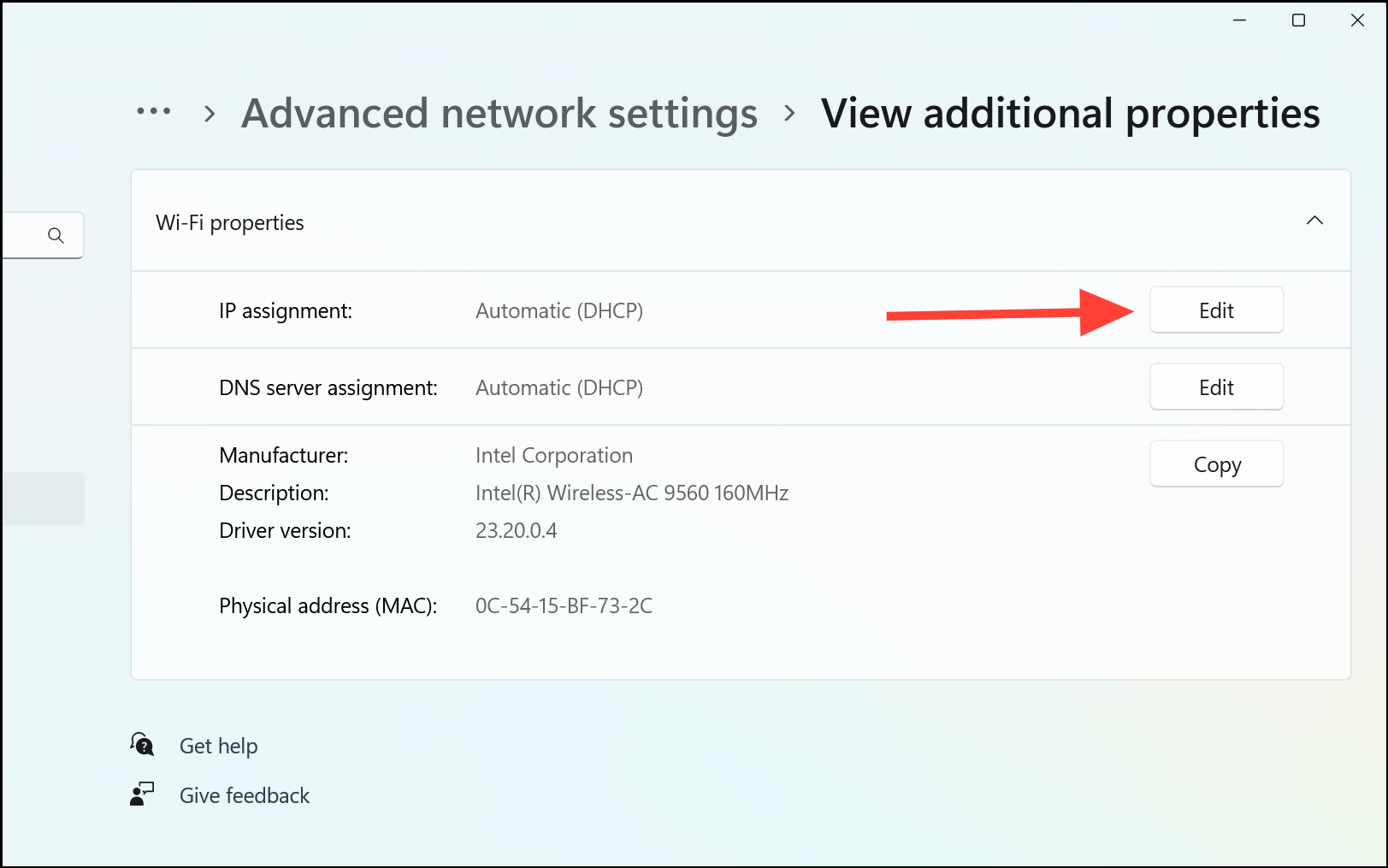
Step 4: In the pop-up window, select Manual from the drop-down menu.
Step 5: Toggle the switch for IPv4 to the On position to enable IPv4 addressing.

Step 6: Fill in the network details in the following fields:
For the IP address, choose a unique address within your router's range, typically between 192.168.0.2 and 192.168.0.254. The Subnet mask is usually 255.255.255.0 for home networks. For the Gateway, enter your router's IP address, commonly 192.168.0.1 or 192.168.1.1; you can find it on your router or by running the ipconfig command in Command Prompt. Enter a Preferred DNS server, such as 1.1.1.1 (Cloudflare) or 8.8.8.8 (Google), and an Alternate DNS server like 1.0.0.1 (Cloudflare) to ensure continuous connectivity if the primary DNS fails.
Step 7: After entering all the required information, click Save to apply the static IP address to your computer.

Enabling Network Discovery
Activating Network Discovery allows your computer to see other devices on your local network and makes it visible to them, which can help with certain network functions like file sharing and can assist in changing NAT types.
Step 1: Open Settings by pressing Win + I, navigate to Network & Internet, and select Advanced network settings.

Step 2: Click on Advanced sharing settings.
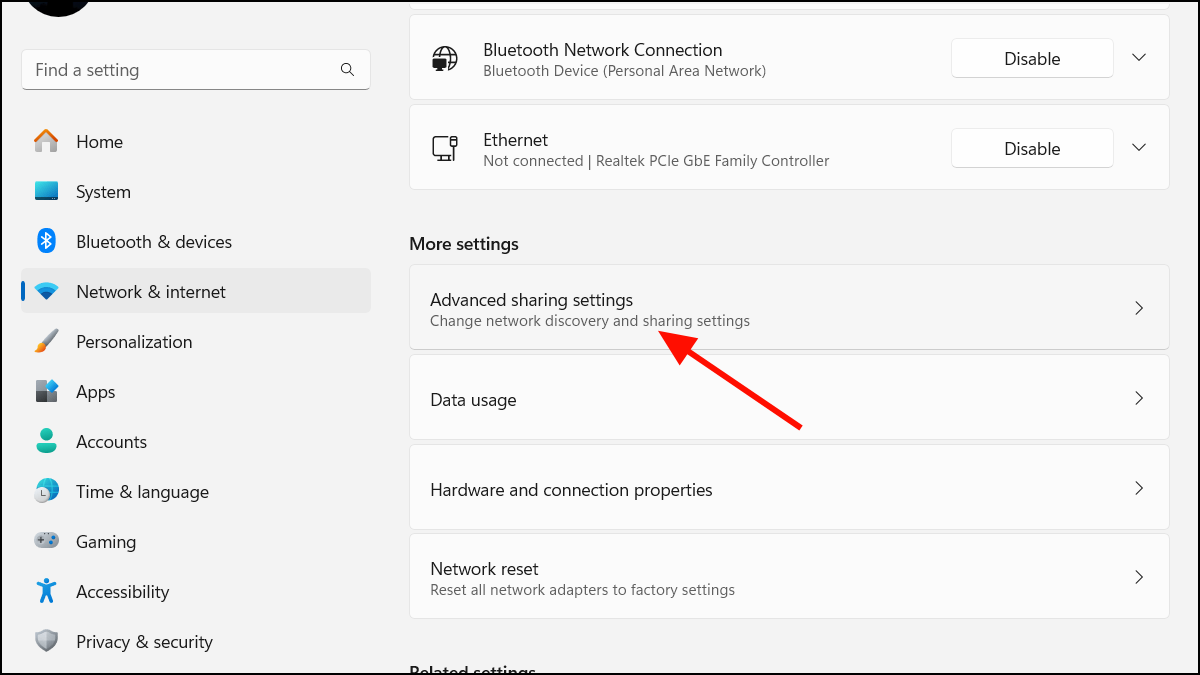
Step 3: Under the Private networks section, turn on the toggle for Network discovery and check the box for Set up network connected devices automatically.
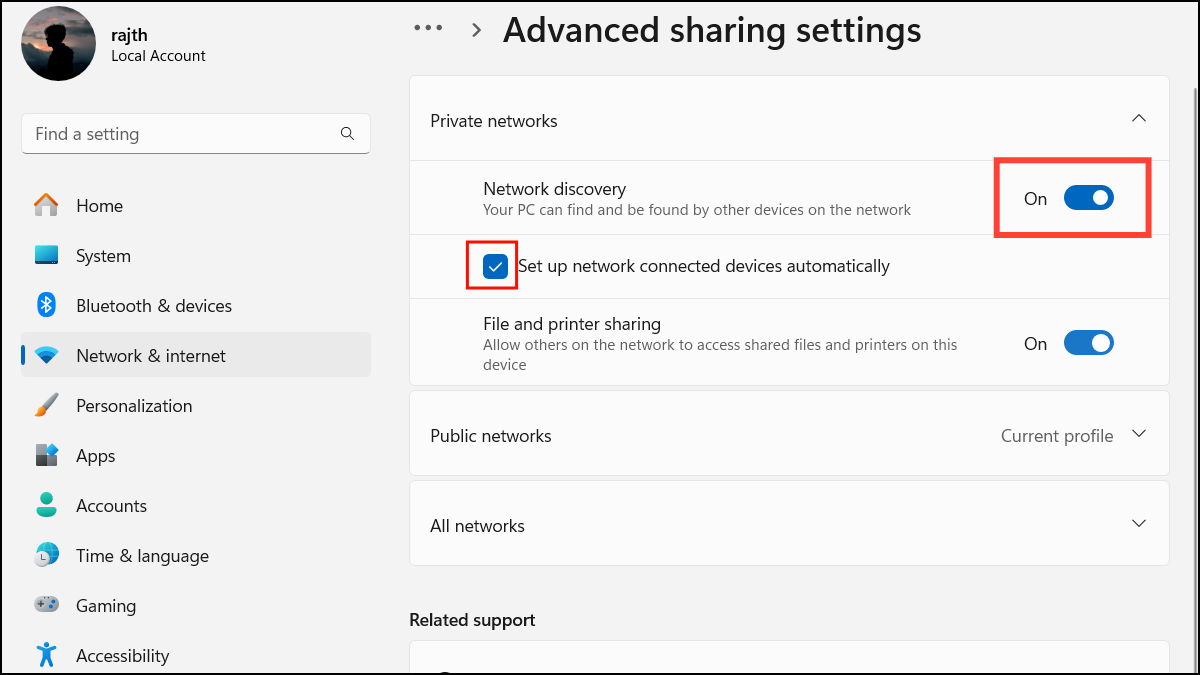
Step 4: Expand the Public networks section and turn on the toggle for Network discovery as well.
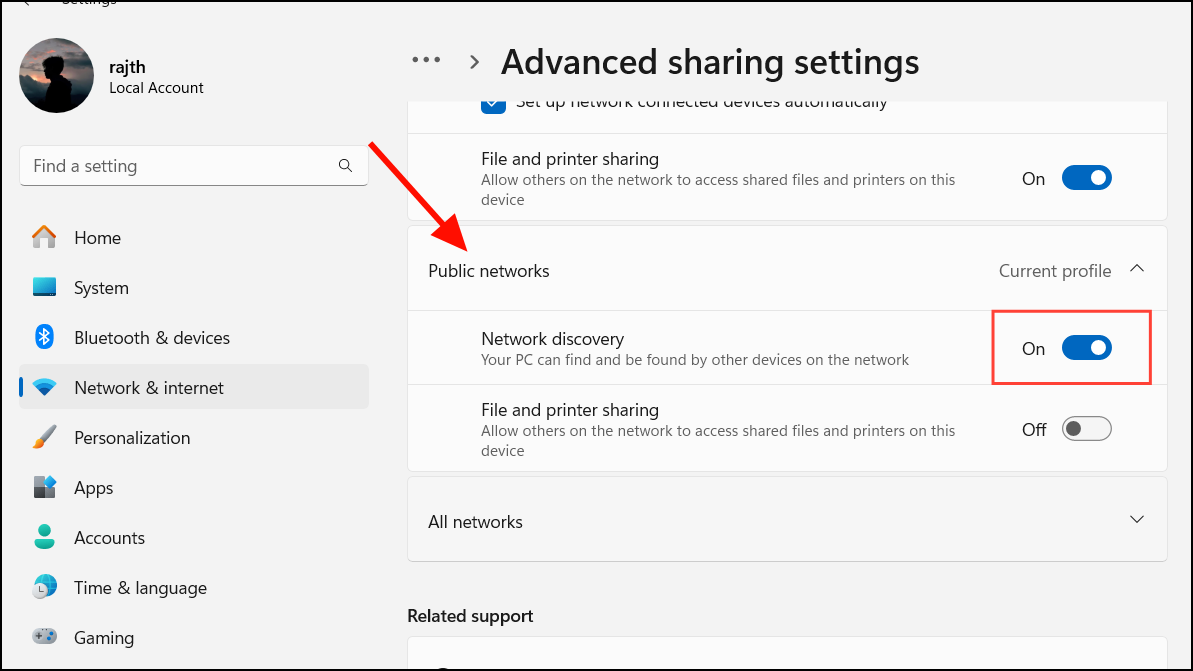
Configuring Your Router
Changing your NAT type usually requires adjustments in your router settings. The following methods can help you modify your router configuration to change your NAT type.
Accessing Your Router Settings
To make changes to your router, you need to access its web interface.
Step 1: Open your web browser and enter your router's default gateway address in the address bar. This is usually http://192.168.0.1/ or http://192.168.1.1/, then press Enter.
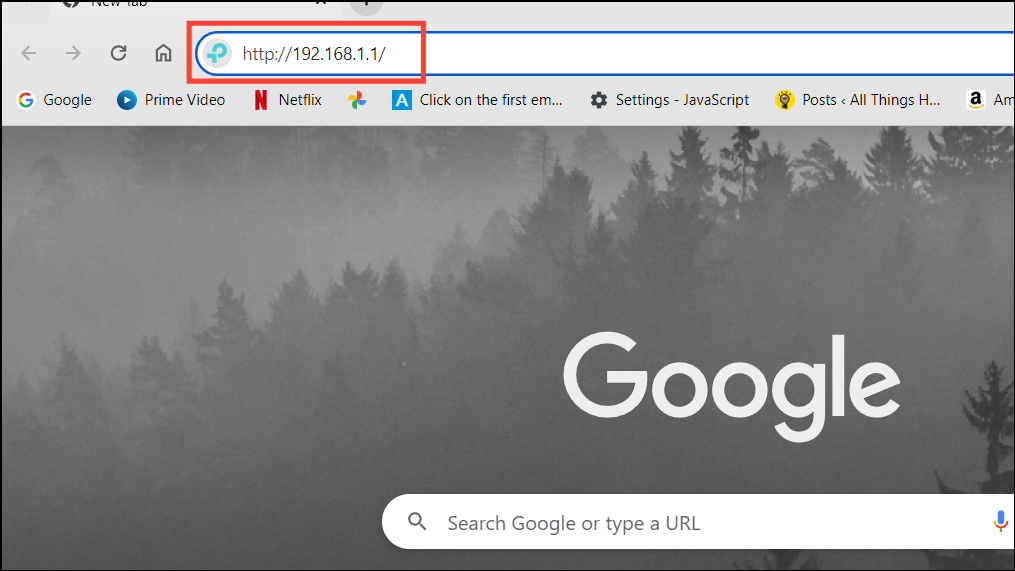
Step 2: Log in with your router's username and password. These credentials can often be found in your router's manual or on a sticker on the router itself.
ipconfig, and press Enter. Look for the 'Default Gateway' under your network adapter's information.Method 1: Enabling UPnP (Universal Plug and Play)
UPnP allows devices on the same network to discover each other and establish functional network services. Enabling UPnP can help adjust your NAT type.
Step 1: After logging into your router's web interface, navigate to the UPnP settings. This is usually found under sections like Advanced or NAT Forwarding.

Step 2: Under NAT Forwarding, select the UPnP tab and enable UPnP by turning on the appropriate switch or checkbox.

Step 3: Restart your router to apply the changes. After the router reboots, your NAT type should no longer be strict.
Method 2: Port Forwarding
Port forwarding manually opens specific ports to allow incoming and outgoing traffic for particular applications, improving connectivity while maintaining better security than UPnP.
Step 1: Log in to your router's web interface.
Step 2: Navigate to the Advanced settings, then find and select NAT Forwarding or Forwarding.

Step 3: In the left panel, select Port Forwarding or Port Triggering.
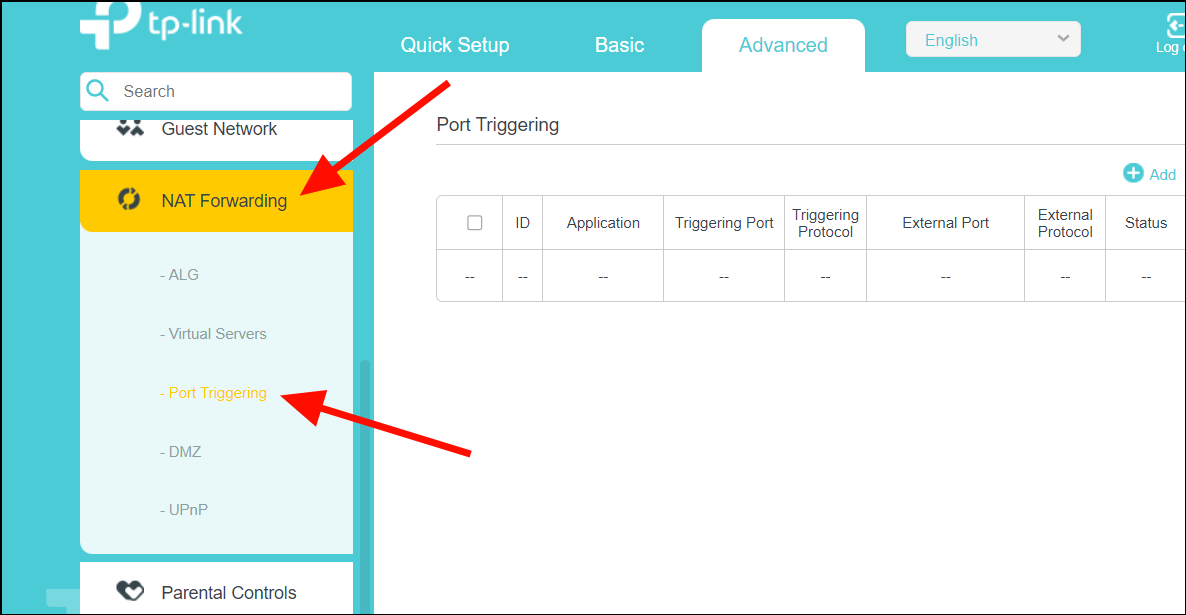
Step 4: Click Add or Add New to create a new port forwarding entry.

Step 5: In the configuration window, enter a name for the service or application (e.g., the name of your game), and input your computer's static IP address in the Device IP Address field.

Step 6: Choose the appropriate protocol (UDP, TCP, or both) based on the application's requirements. If unsure, select 'All' to cover both protocols.
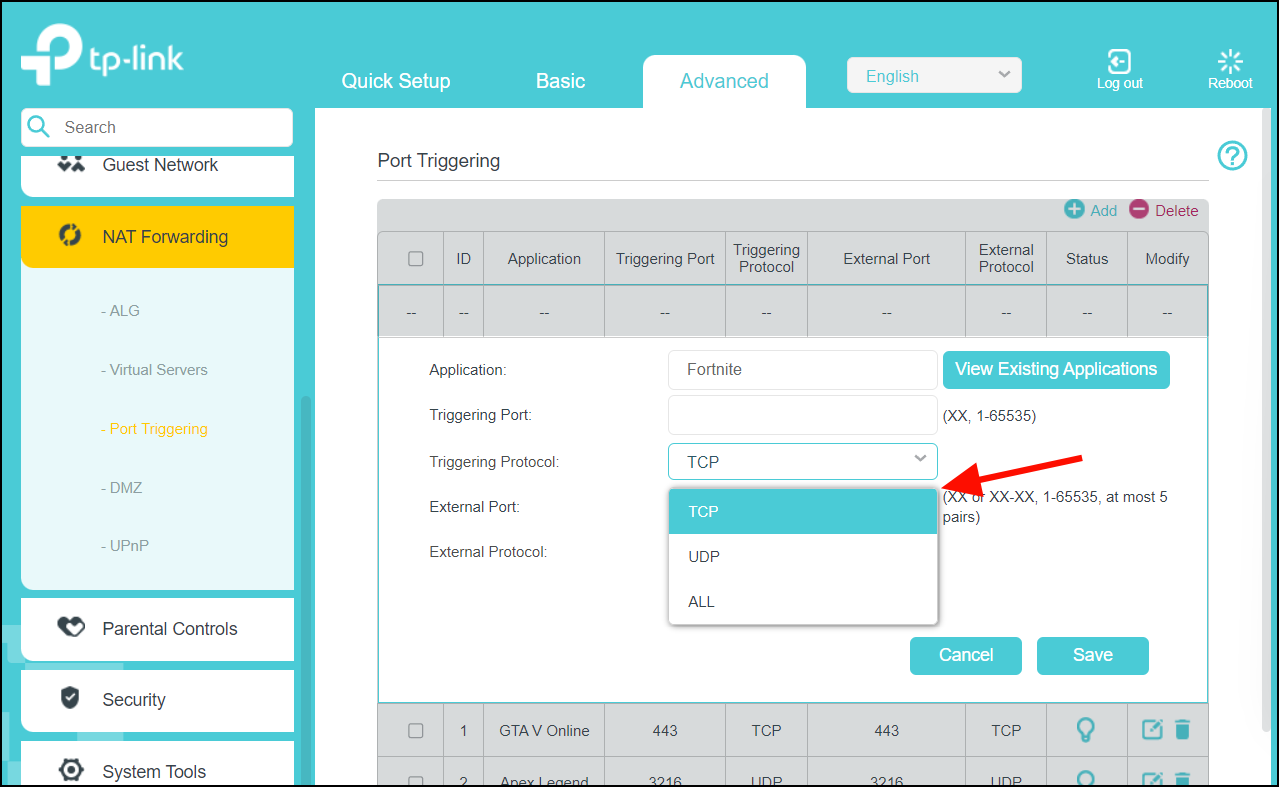
Step 7: Enter the port numbers required by your application in both the Internal and External Port fields. For example, if the game requires port 5062, input 5062 in both fields.

Step 8: Save the port forwarding rule by clicking Save or Apply.
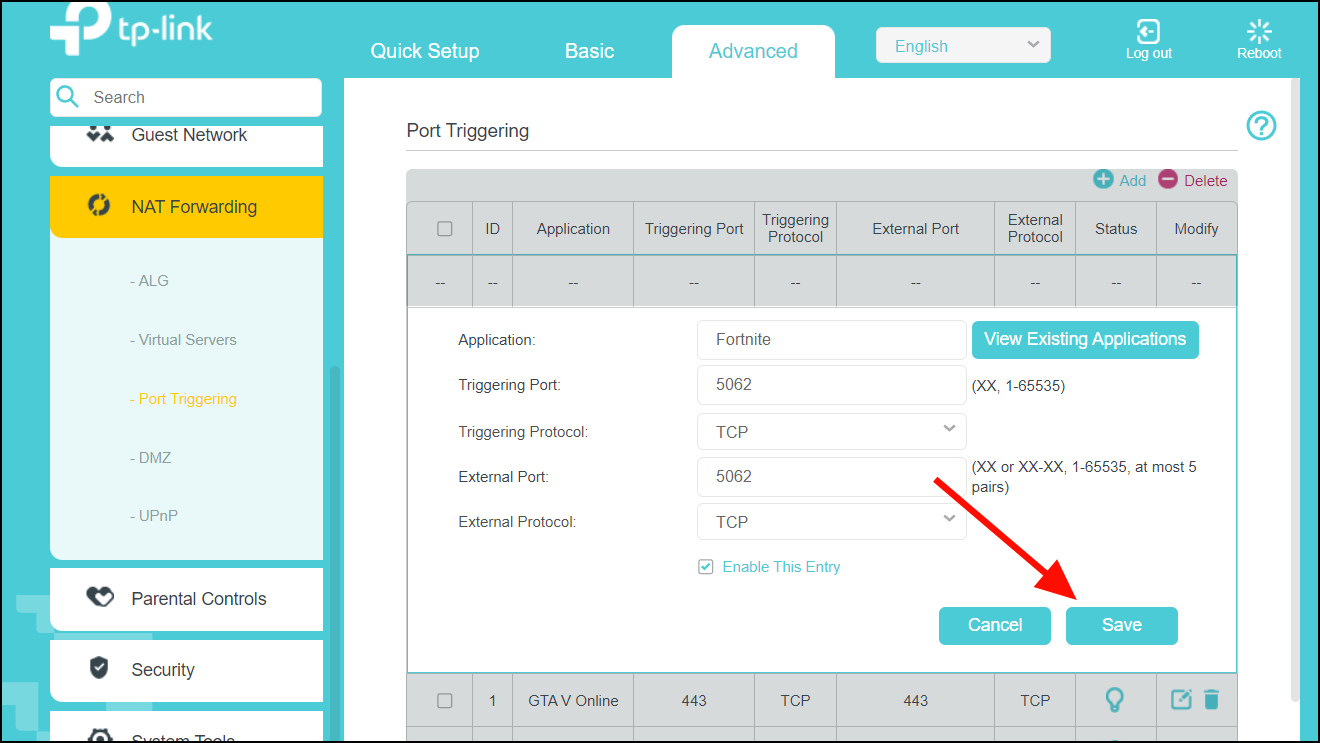
Step 9: After saving, you can enable or disable the rule using the status toggle if needed.
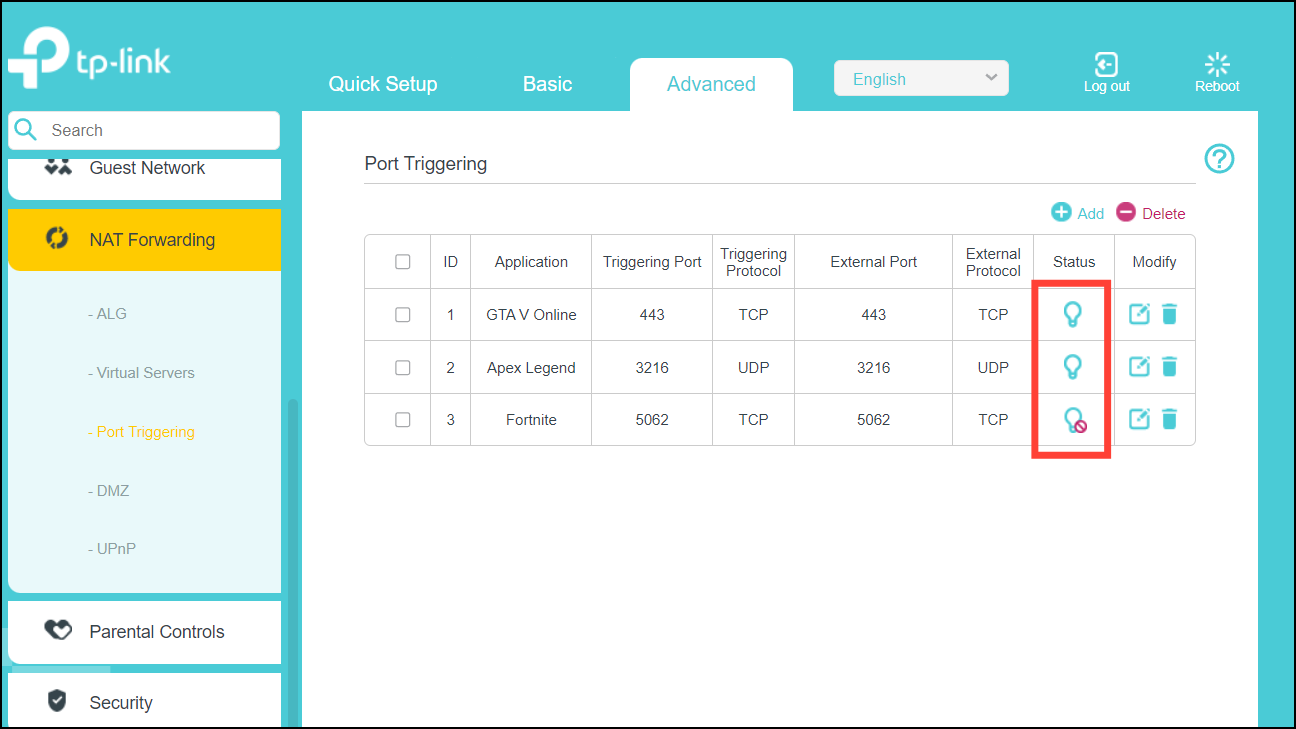
Step 10: Restart your router to apply the changes. Once it reconnects, test your application to see if the NAT type has changed.
Method 3: Enabling DMZ (Demilitarized Zone) Mode
DMZ mode places your computer outside the router's firewall, exposing it directly to the internet. This can help change your NAT type but comes with significant security risks.
Step 1: Access your router's web interface and navigate to the Advanced settings.
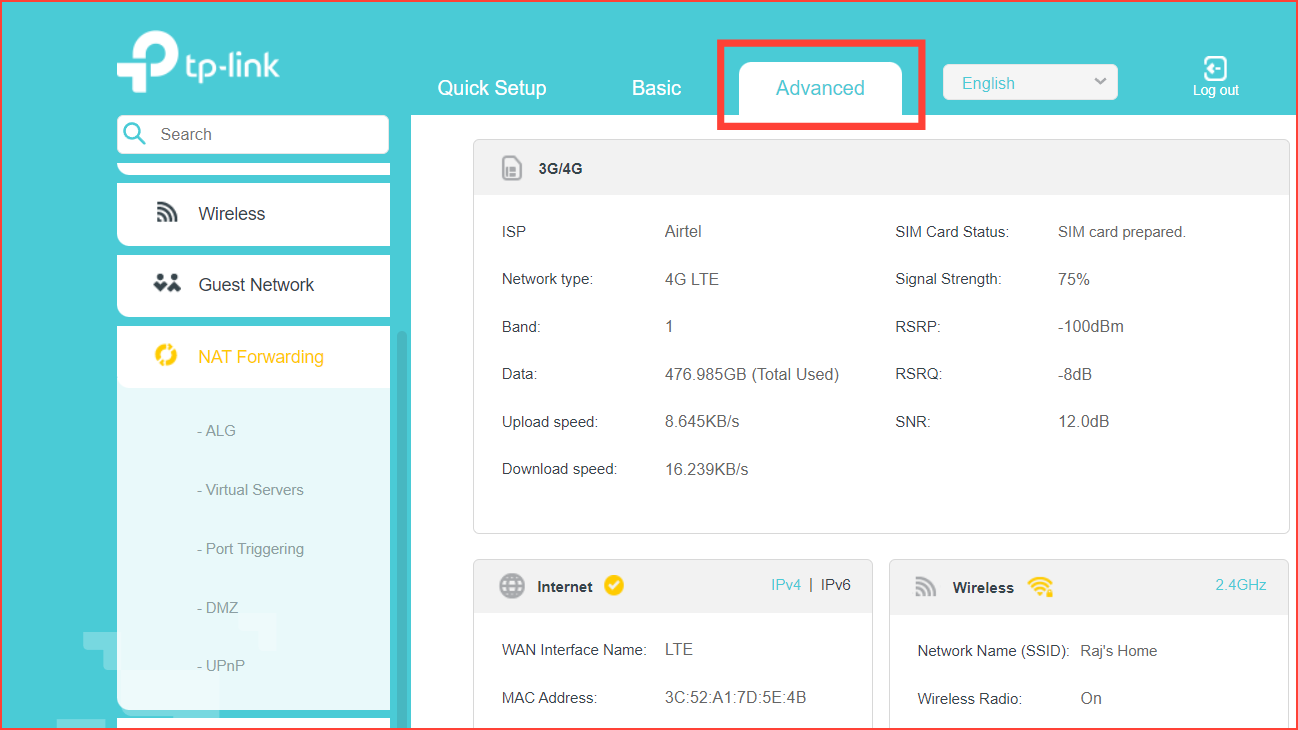
Step 2: In the left panel, select DMZ under the NAT Forwarding or Forwarding section.

Step 3: Enable the DMZ option, enter your computer's static IP address, and click Save.
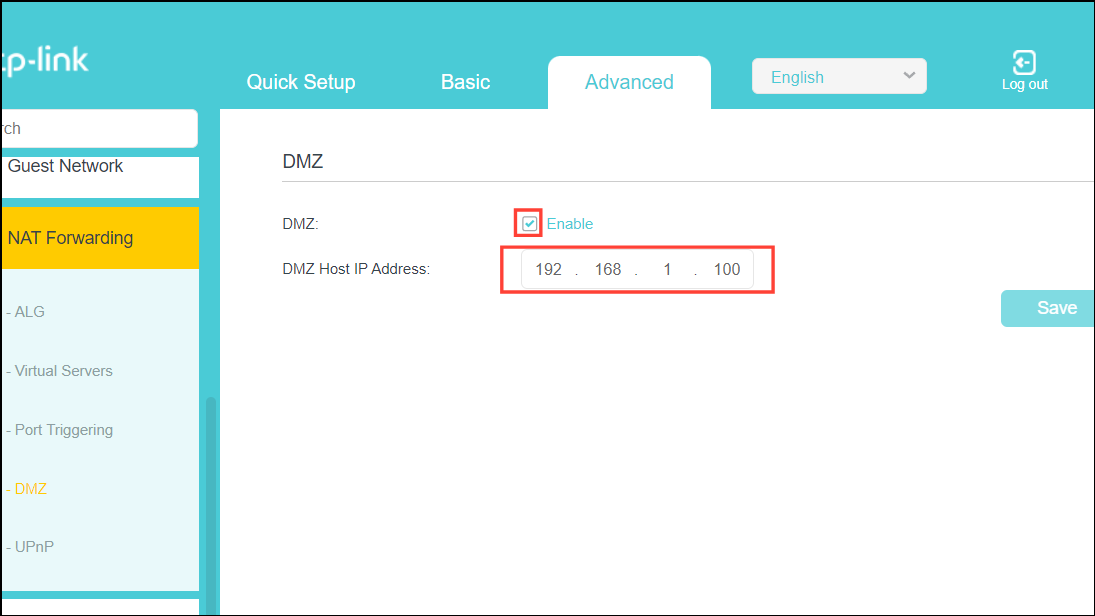
Step 4: Restart your router to apply the changes.
Using DMZ mode exposes your computer directly to the internet, which can significantly compromise security. It should be used cautiously and only if other methods do not work.
Method 4: Editing the Router Configuration File
For advanced users, editing the router's configuration file can provide more control over NAT settings. This method should be used with caution, as incorrect changes can disrupt your network.
Step 1: Access your router's web interface and navigate to the Advanced settings, then select System Tools.
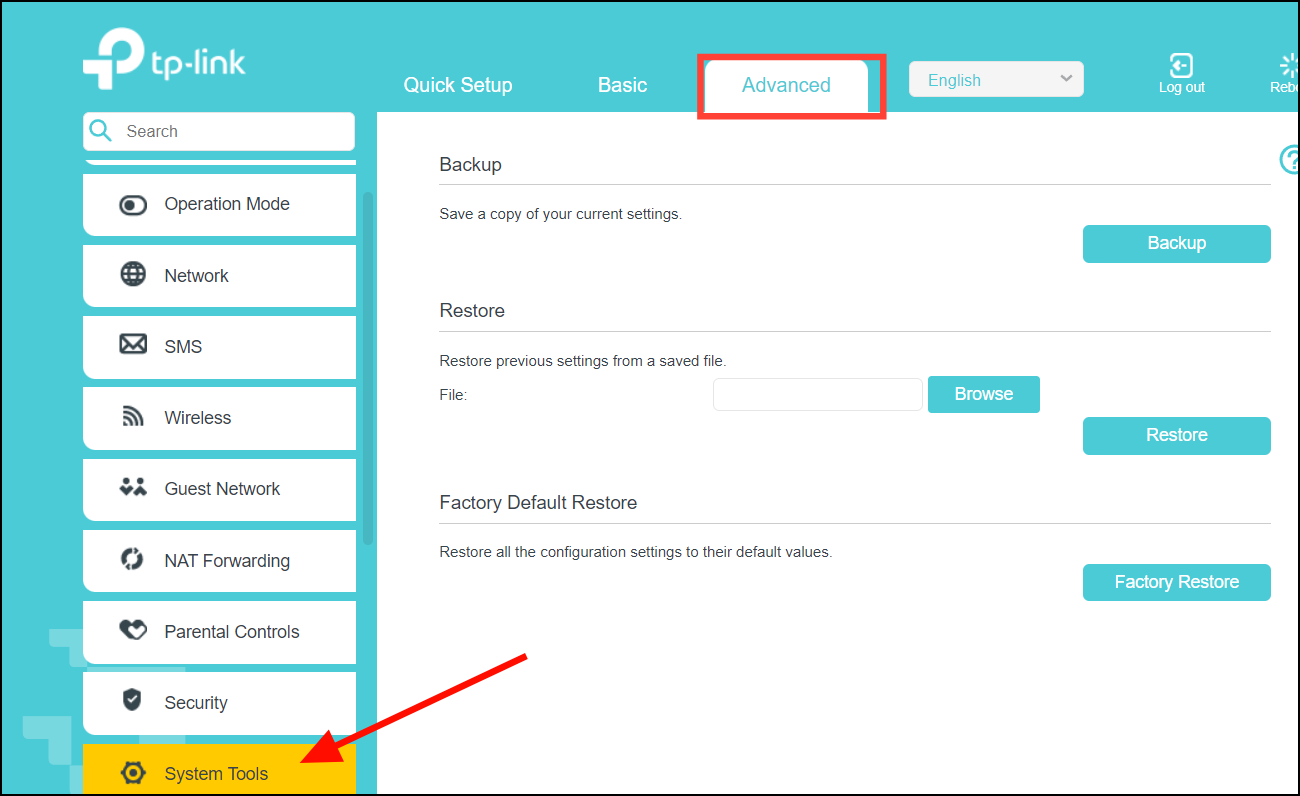
Step 2: Click on Backup & Restore or Save and Restore Settings to backup your current configuration before making any changes.

Step 3: Click the Backup or Save Configuration button to download the configuration file to your computer.

Step 4: Save the configuration file to a desired location on your computer and make a duplicate copy as a backup.

Step 5: If prompted, choose to keep the saved file.
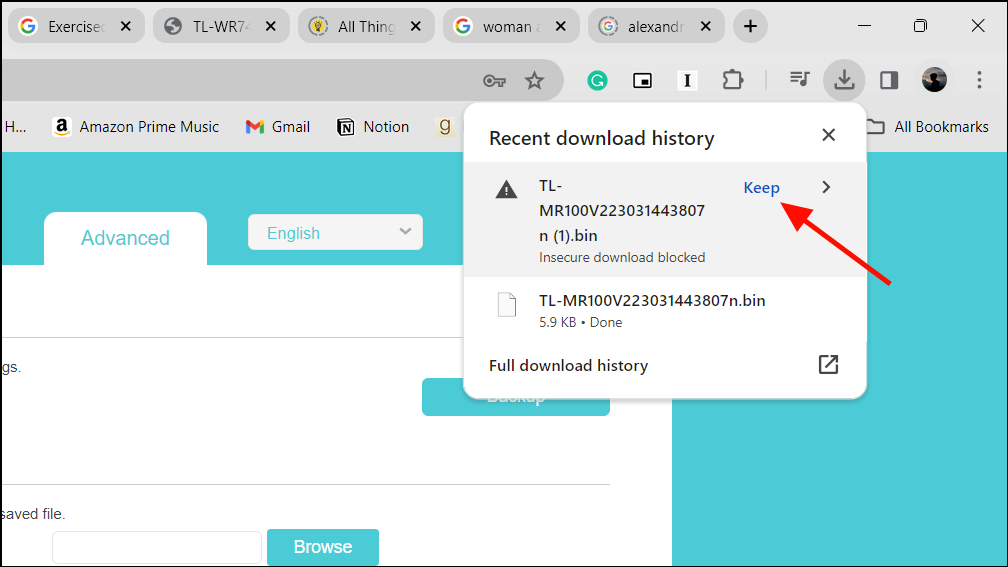
Step 6: Open the configuration file with a text editor like Notepad (only if it's in '.ini' format).
Step 7: Use the search function (Ctrl + F) to locate the connection.ini section and find the last bind line.
Step 8: After the last bind line, add the following code, replacing the port numbers with those required by your application:
bind application=CONE(UDP) port=3478-3479Step 9: Save the modified configuration file.
Step 10: Return to the router's web interface, and in the Backup & Restore section, click Browse under the Restore section to select the modified configuration file.
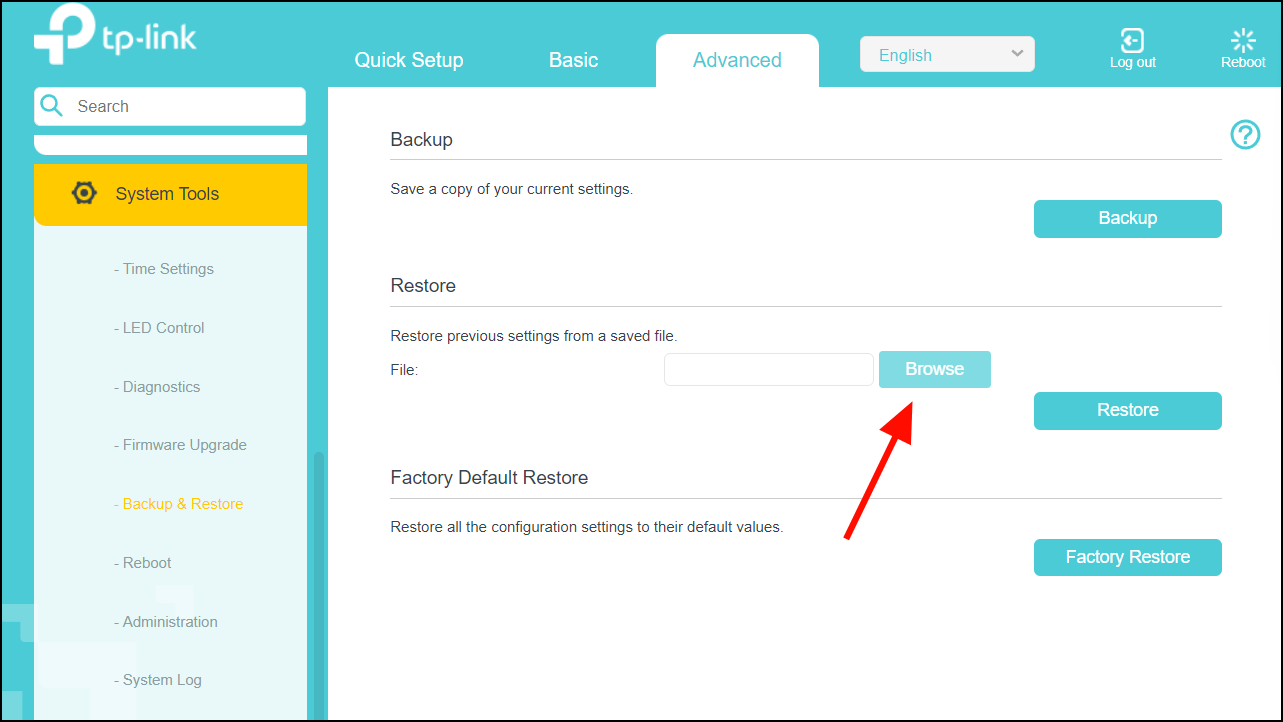
Step 11: Click Restore to upload the new configuration to the router.
Step 12: Restart your router to apply the changes and check if the NAT type has changed.
Enabling UPnP Using Windows Network Settings
If your router does not support UPnP or you cannot access its settings, you can enable UPnP through Windows Network settings to help change your NAT type.
Step 1: Open File Explorer and click on Network in the left sidebar.
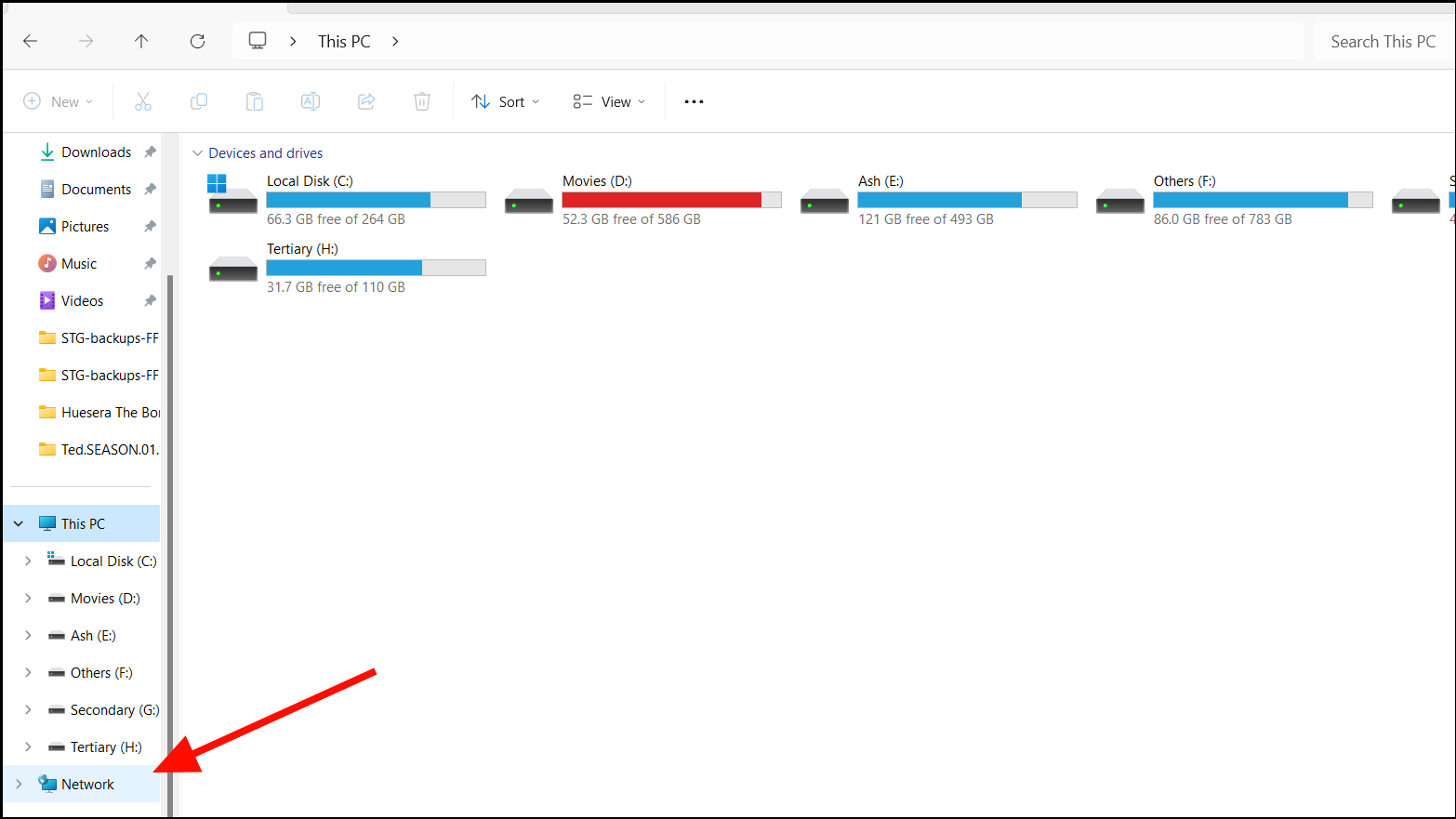
Step 2: Right-click on your Network Adapter or Network Infrastructure device and select Properties.
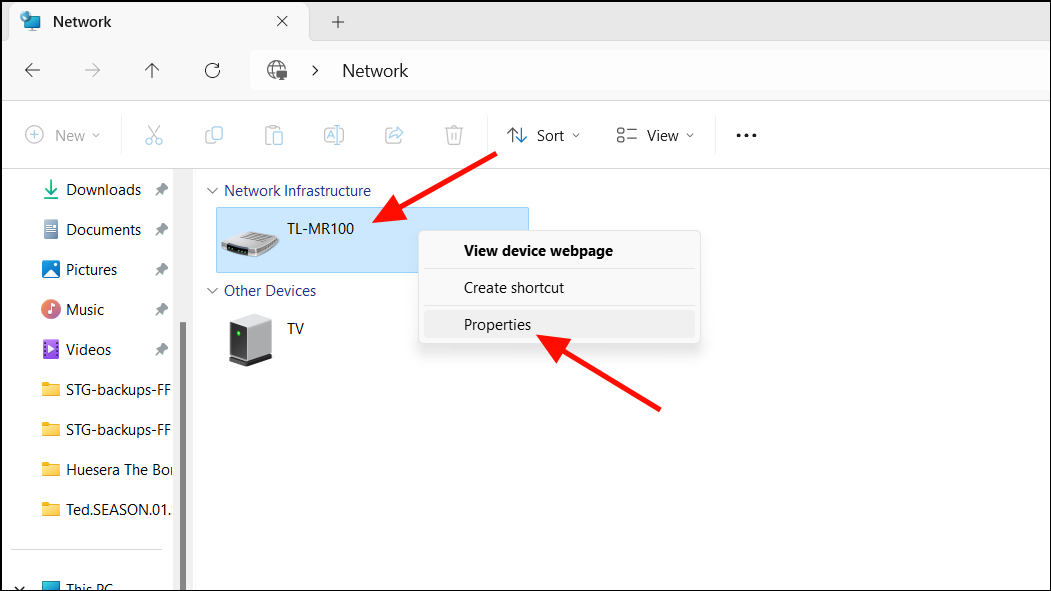
Step 3: In the properties window, click on Settings.

Step 4: In the Advanced Settings window, click Add.
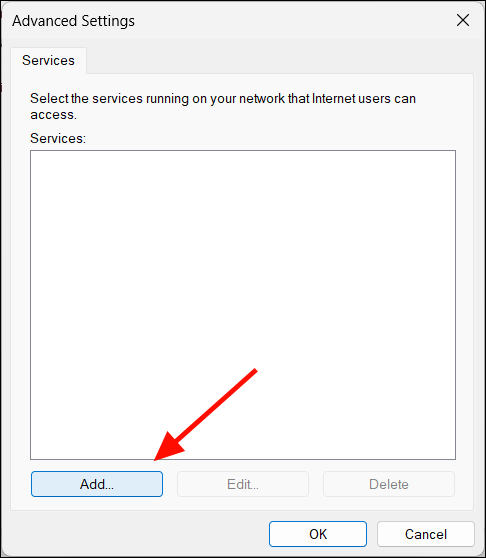
Step 5: Enter a description of the service (e.g., the name of your game) and input your computer's IPv4 address in the Name or IP address field.

Step 6: Specify the port numbers in both External and Internal Port Number fields, and select the appropriate protocol (TCP or UDP).

Step 7: Click OK to save the settings. Repeat these steps for additional services or applications if necessary.

Step 8: Once finished, click Apply and then OK on all open windows to confirm the changes.

This method creates temporary port forwarding rules that reset when you restart your router or disconnect from the network. You may need to repeat these steps if your NAT type reverts.
Verifying NAT Type Changes
After making these changes, you should verify whether your NAT type has changed. You can usually check this within your application's network settings, or by accessing your router's interface.
- In Application Settings: Launch the application or game and navigate to its network or connection settings to view your NAT type.
- Via Router Interface: Log into your router's web interface and look for a section that displays your current NAT type under network or status information.
- Restart Devices: If changes are not reflected, restart your router and computer to ensure new configurations are applied.
Security Considerations
- Always keep your router's firmware updated to protect against known vulnerabilities.
- Be cautious when enabling features like UPnP or DMZ, as they can expose your network to security risks.
- Regularly review your router's security settings and disable unnecessary services.
By adjusting your NAT type through router and Windows settings, you can enhance your online connectivity for gaming and other applications. Remember to balance improved access with security considerations to protect your network.

